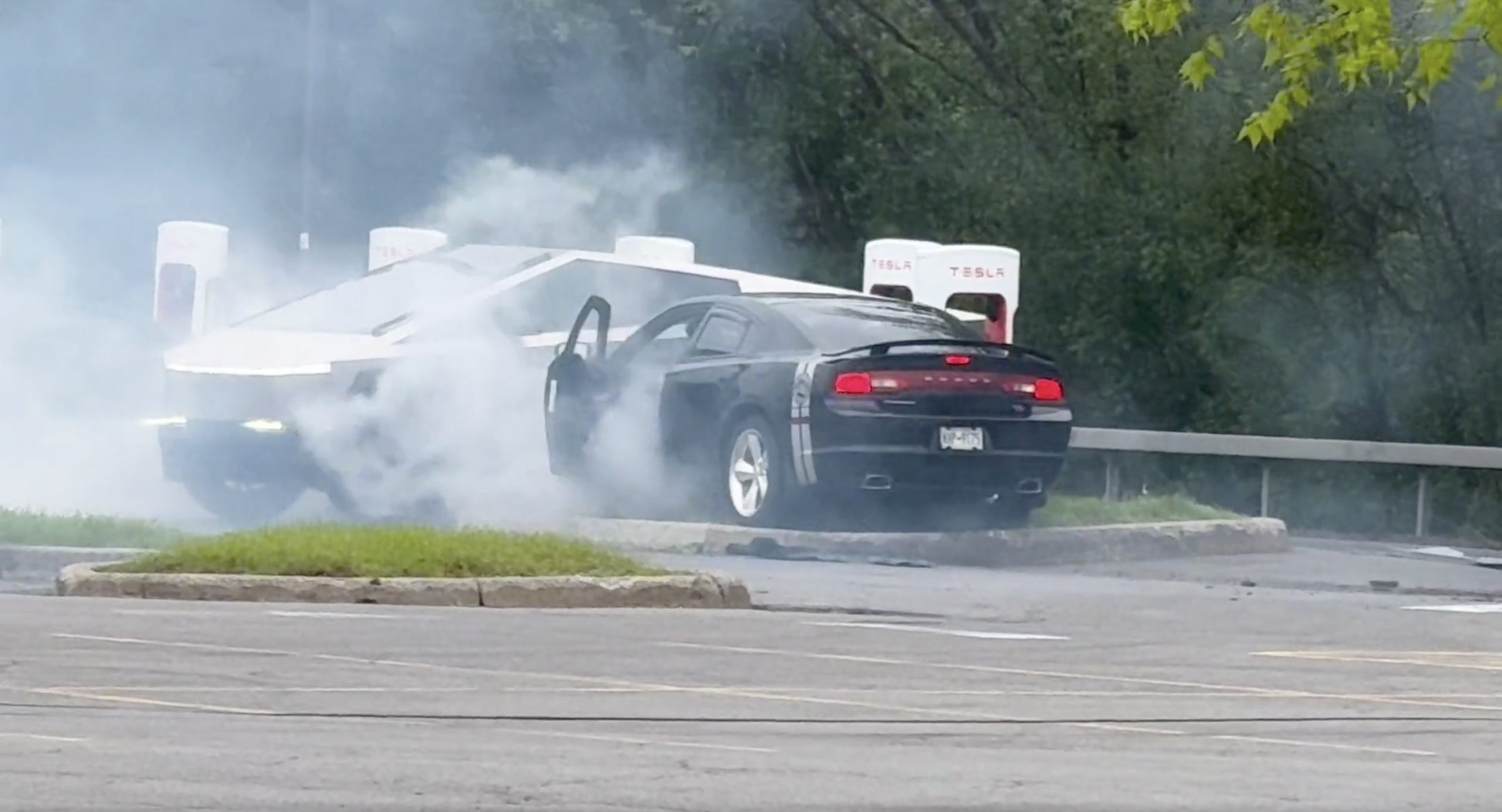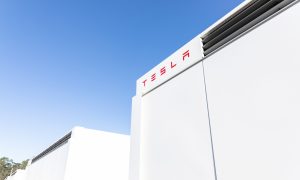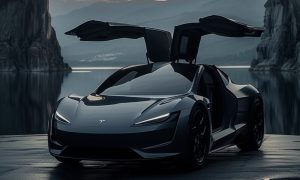

Lifestyle
Tesla Roadster Sport comes out of retirement to race the Model 3 Performance
Some vehicles will forever hold a special place in people’s hearts. For the Tesla community, that car would be the original Roadster, a car that broke the mold of conventional electric vehicles when it was released. With the Roadster, Tesla proved that electric cars did not have to look and perform like glorified golf carts — they can be fast, sleek, and sexy too.
The original Roadster garnered a lot of awards during its time. On October 27, 2009, for one, the Tesla Roadster set a world distance record for production electric cars, traveling 501 km (311 miles) on a single charge. In March 2010, the sports car also became that first electric vehicle to win the Monte Carlo Alternative Energy Rally, with Formula One driver Erik Comas driving an Arctic White Roadster to dominate the three-day, 1,000-km (620-mile) event.
Tesla released the Roadster Sport in 2009, as a top trim for the electric sports car. In its review of the vehicle, Car and Driver noted that the Roadster Sport hit 60 mph in just 4 seconds, thanks to its powerful AC permanent-magnet synchronous electric motor that produces instant torque. With its 122 mph top speed, 288 bhp of power, and 295 lb-ft of torque, the Roadster Sport was capable of sucking the breath out of unassuming passengers.
Tesla only sold about 2,450 Roadsters during the vehicles’ entire run from 2008-2012. After the Roadster, Tesla focused its efforts on developing and refining the Model S sedan, a vehicle that could very well be the most important car of the decade. Following the Model S was the Model X SUV, and after that came the Model 3, the company’s first attempt at a mass-market car. Tesla passed through “production hell” with the Model 3, though the company was able to power through its difficulties this year. Elon Musk recently noted that Tesla is now at a point when it has no problem building 5,000 Model 3 a week — more than twice the number of original Roadsters the company produced over four years.
The Model 3 Performance is the top trim of Tesla’s latest vehicle. Being powered by larger and more energy-dense 2170 battery cells, the Model 3 Performance is Tesla’s first track capable car. Equipped with two electric motors that produce a combined 450 hp and 471 lb-ft of torque, the high-performance electric sedan has an impressive 0-60 mph time of 3.5 seconds (eventually updated to 3.3 seconds by Tesla), a top speed of 155 mph, and a range of 310 miles per charge.
In sheer specs alone, the Model 3 Performance — the most conservative among Tesla’s Performance-branded vehicles — outguns the original Roadster. As a video of a race between the two cars shows, though, the original Tesla Roadster is still incredibly quick despite its age. The race between Tesla’s past and present electric cars was held at the Atco Dragway in NJ, where two neophyte drivers christened the drag strip with the rather rare matchup.
Thanks to the raw power of its electric motor, as well as the reaction time of the Model 3 Performance’s driver, the Tesla Roadster Sport established an early lead during the bout. Midway through the quarter-mile, though, the Model 3 Performance started catching up. Both vehicles were neck-and-neck until the end of the race. The Model 3 Performance crossed the quarter-mile mark in 11.838 seconds at 114.02 mph, while the Tesla Roadster Sport completed the run in 12.959 seconds at 101.13 mph. Thus, despite getting the jump over the newer car off the line, the Roadster Sport ultimately bowed down to the Model 3 Performance by 0.6623 seconds.
Its loss to the Model 3 Performance aside, it’s difficult to not remain impressed by the Tesla Roadster Sport. The car, after all, is equipped with battery and powertrain technology that has since been improved by Tesla. Despite this, the vehicle was still able to perform the way Elon Musk wanted it to — as an electric sports car that can stand toe-to-toe with some of the best high-performance cars in the market.
Watch the original Tesla Roadster Sport battle the Model 3 Performance in the video below.
Lifestyle
EV fans urge Tesla to acquire Unplugged Performance for edge in fleet and security industry
Unplugged Performance has built a name for itself by producing performance upgrades for Tesla vehicles.

A growing number of Tesla enthusiasts and longtime community voices are calling on the electric vehicle maker to acquire Unplugged Performance, a California-based aftermarket company best known for tuning Tesla vehicles and developing specialized government fleet solutions under its UP.FIT division.
The idea was once considered a niche proposal among EV fans, but it is now gaining serious attention not just as a performance play but as a strategic move to deepen Tesla’s roots in the fleet and security industry.
A strategic fit
Unplugged Performance has built a name for itself by producing performance upgrades for Tesla vehicles, from track-optimized components to visual and aerodynamic upgrades. But in recent years, its UP.FIT division has pivoted toward a more functional future by outfitting Tesla vehicles like Model Ys for police, military, and government use.
That work has sparked growing calls for closer collaboration with Tesla, especially as the EV maker increasingly leans into autonomy, AI, and fleet services as core components of its next chapter.
“I posted this four years ago, but I think it’s more true now than ever,” wrote Whole Mars Catalog, a well-known Tesla investor and FSD Beta tester, on X. “Tesla should buy Unplugged. But not just as a Performance division. What they are doing with UP.FIT unlocks large government and commercial fleet purchases that can improve utilization.”
Tesla fans such as shareholder Sawyer Merritt echoed the sentiment, calling Unplugged a “great fit within Tesla.” adding, “They are literally located directly next to Tesla’s design studio in Hawthorne.”
Enabling the next wave
Supporters of the idea noted that integrating Unplugged into Tesla’s corporate structure could help accelerate the adoption of autonomous technologies in government sectors. With UP.FIT patrol cars already in use across some U.S. police departments, Tesla fans envisioned a future where self-driving Teslas could potentially revolutionize law enforcement, search-and-rescue, and public service logistics.
“Just imagine how autonomous patrol cars could transform policing and bring us into a safer future,” the veteran FSD tester wrote.
The benefits could also extend to Tesla’s existing consumer base. “They also have some incredible products in the works that I think will appeal to many ordinary Tesla drivers — not just those looking for performance or mods. Stuff that’s so good it should have come straight from the design studio next door,” Whole Mars Catalog noted.
Unplugged Performance, founded in 2013, shares not just a product vision with Tesla, but also geography. Its Hawthorne headquarters sits directly adjacent to Tesla’s design studio, and the two companies have maintained a close working relationship over the years. The aftermarket firm has long positioned itself as a “mission-aligned” partner to Tesla.
In response to the recent calls for acquisition, Unplugged Performance acknowledged the support from the community. “Our very existence is to support the Tesla mission with @UpfitTesla and @UnpluggedTesla,” Unplugged CEO Ben Schaffer posted on X. “We love working with Tesla and are grateful for the community’s support since 2013!”
Elon Musk
X account with 184 followers inadvertently saves US space program amid Musk-Trump row
Needless to say, the X user has far more than 184 followers today after his level-headed feat.

An X user with 184 followers has become the unlikely hero of the United States’ space program by effectively de-escalating a row between SpaceX CEO Elon Musk and President Donald Trump on social media.
Needless to say, the X user has far more than 184 followers today after his level-headed feat.
A Near Fall
During Elon Musk and Donald Trump’s fallout last week, the U.S. President stated in a post on Truth Social that a good way for the United States government to save money would be to terminate subsidies and contracts from the CEO’s companies. Musk responded to Trump’s post by stating that SpaceX will start decommissioning its Dragon spacecraft immediately.
Musk’s comment was received with shock among the space community, partly because the U.S. space program is currently reliant on SpaceX to send supplies and astronauts to the International Space Station (ISS). Without Dragon, the United States will likely have to utilize Russia’s Soyuz for the same services—at a significantly higher price.
X User to the Rescue
It was evident among X users that Musk’s comments about Dragon being decommissioned were posted while emotions were high. It was then no surprise that an X account with 184 followers, @Fab25june, commented on Musk’s post, urging the CEO to rethink his decision. “This is a shame this back and forth. You are both better than this. Cool off and take a step back for a couple days,” the X user wrote in a reply.
Much to the social media platform’s surprise, Musk responded to the user. Even more surprising, the CEO stated that SpaceX would not be decommissioning Dragon after all. “Good advice. Ok, we won’t decommission Dragon,” Musk wrote in a post on X.
Not Planned, But Welcomed
The X user’s comment and Musk’s response were received extremely well by social media users, many of whom noted that @Fab25june’s X comment effectively saved the U.S. space program. In a follow-up comment, the X user, who has over 9,100 followers as of writing, stated that he did not really plan on being a mediator between Musk and Trump.
“Elon Musk replied to me. Somehow, I became the accidental peace broker between two billionaires. I didn’t plan this. I was just being me. Two great minds can do wonders. Sometimes, all it takes is a breather. Grateful for every like, DM, and new follow. Life’s weird. The internet’s weirder. Let’s ride. (Manifesting peace… and maybe a Model Y.)” the X user wrote.
Lifestyle
Tesla Cybertruck takes a bump from epic failing Dodge Charger
The Cybertruck seemed unharmed by the charging Charger.

There comes a time in a driver’s life when one is faced with one’s limitations. For the driver of a Dodge Charger, this time came when he lost control and crashed into a Tesla Cybertruck–an absolute epic fail.
A video of the rather unfortunate incident was shared on the r/TeslaLounge subreddit.
Charging Charger Fails
As could be seen in the video, which was posted on the subreddit by Model Y owner u/Hammer_of_something, a group of teens in a Dodge Charger decided to do some burnouts at a Tesla Supercharger. Unfortunately, the driver of the Charger failed in his burnout or donut attempt, resulting in the mopar sedan going over a curb and bumping a charging Cybertruck.
Ironically, the Dodge Charger seemed to have been parked at a Supercharger stall before its driver decided to perform the failed stunt. This suggests that the vehicle was likely ICE-ing a charging stall before it had its epic fail moment. Amusingly enough, the subreddit member noted that the Cybertruck did not seem like it took any damage at all despite its bump. The Charger, however, seemed like it ran into some trouble after crashing into the truck.
Alleged Aftermath
As per the the r/TeslaLounge subreddit member, the Cybertruck owner came rushing out to his vehicle after the Dodge Charger crashed into it. The Model Y owner then sent over the full video of the incident, which clearly showed the Charger attempting a burnout, failing, and bumping into the Cybertruck. The Cybertruck owner likely appreciated the video, in part because it showed the driver of the Dodge Charger absolutely freaking out after the incident.
The Cybertruck is not an impregnable vehicle, but it can take bumps pretty well thanks to its thick stainless steel body. Based on this video, it appears that the Cybertruck can even take bumps from a charging Charger, all while chilling and charging at a Supercharger. As for the teens in the Dodge, they likely had to provide a long explanation to authorities after the incident, since the cops were called to the location.
-

 Elon Musk2 weeks ago
Elon Musk2 weeks agoTesla investors will be shocked by Jim Cramer’s latest assessment
-

 News2 days ago
News2 days agoTesla debuts hands-free Grok AI with update 2025.26: What you need to know
-

 Elon Musk4 days ago
Elon Musk4 days agoxAI launches Grok 4 with new $300/month SuperGrok Heavy subscription
-

 Elon Musk6 days ago
Elon Musk6 days agoElon Musk confirms Grok 4 launch on July 9 with livestream event
-

 News1 week ago
News1 week agoTesla Model 3 ranks as the safest new car in Europe for 2025, per Euro NCAP tests
-

 Elon Musk2 weeks ago
Elon Musk2 weeks agoxAI’s Memphis data center receives air permit despite community criticism
-

 News4 days ago
News4 days agoTesla begins Robotaxi certification push in Arizona: report
-

 News2 weeks ago
News2 weeks agoTesla sees explosive sales growth in UK, Spain, and Netherlands in June














